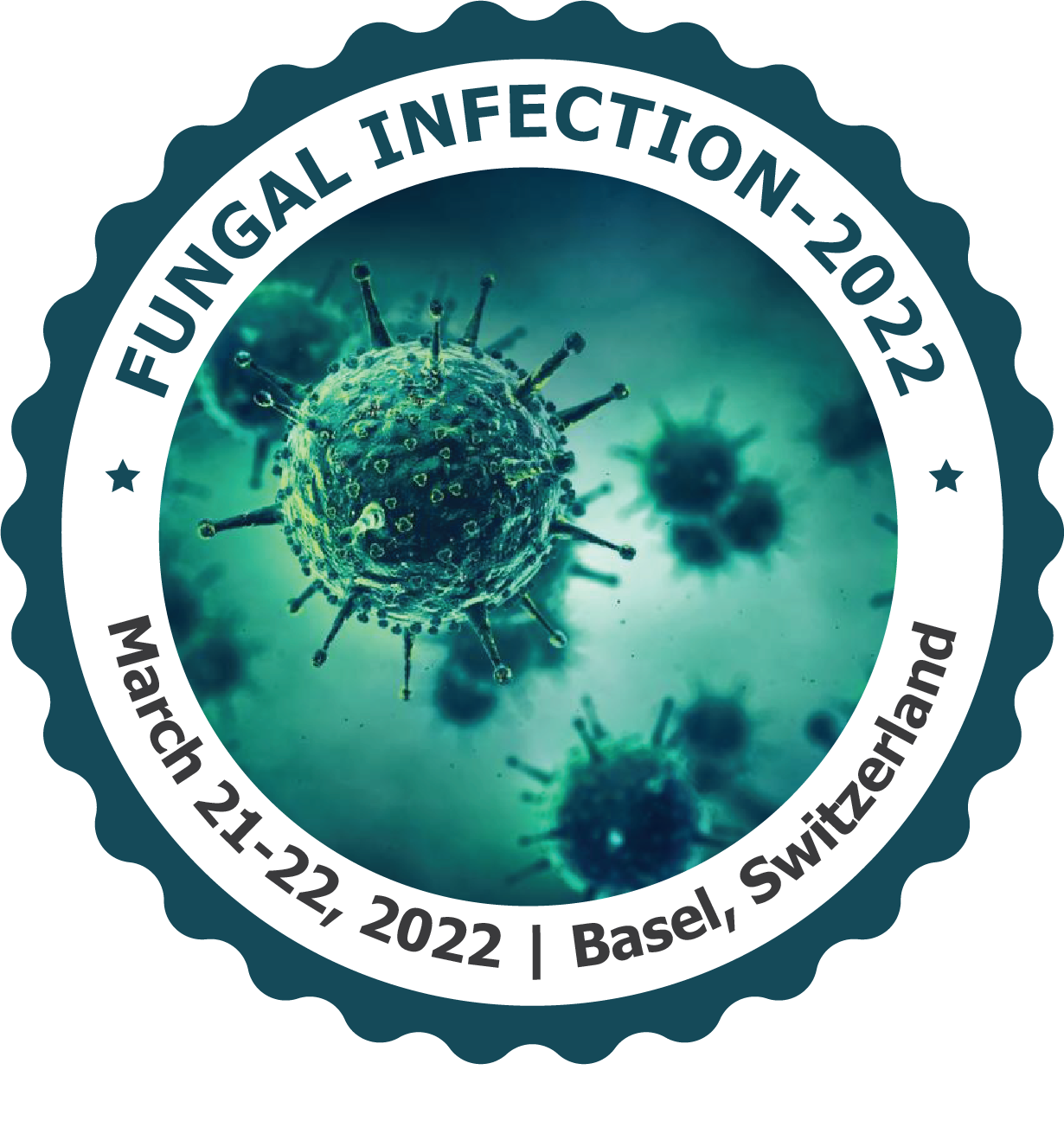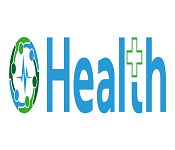Recommended Global Healthcare Management Webinars & Conferences
Europe & UK
Asia Pacific & Middle East
Canada
Fungal Infection-2022
About Conference
Conference Series Ltd is a renowned organization that organizes highly notable Microbiology and Infectious Diseases conferences throughout the globe. After a successful series of conferences, conference Series Ltd is currently bringing forth the “3rd International Conference on Fungal Infections and Emerging Treatments”during March 21-22, 2022 Basel, Switzerland.
Conference Series Ltd Organizes 1000+ Conferences Every Year across USA, Europe & Asia with support from 1000 more scientific societies and Publishes 700+ Open access journals which contains over 100000 eminent personalities, reputed scientists as editorial board members.
Fungal Infections 2022 conference will focus on the latest and exciting innovations in all areas of fungal diseases research which offers a unique opportunity for investigators across the globe to meet, network, and perceive new scientific innovations. This year’s annual congress highlights the theme, “Update on current trends and developments in controlling fungal diseases” which reflects the innovative progress in fungal disease research. The two days conference includes workshops, symposiums, special keynote sessions conducted by eminent and renowned speakers who excel in the field of fungal diseases. This National Fungal Infections Conference also encourages the active participation of young student researchers as we are hosting Poster Award Competition and Young research Forum at the conference venue.
Take advantage of opportunities to learn about fungal diseases and control research from a variety of oral and poster presentations. Meet and network with Mycologists ranging from students to deans, faculty, and researchers. Take advantage of opportunities to collaborate with Mycologists from around the world. Attend prominent plenary sessions about relevant issues affecting nursing education.
Who can attend?
Fungal Diseases conference brings together individuals who have an interest in different fields of Fungal Infections. It is a forum to explore issues of mutual concern as well as exchange knowledge, share evidence, ideas, and generate solutions.
Why to Attend?
Fungal infections conferences provides a global platform for exchanging ideas and make us updated about the latest innovations in Fungal Diseases and Control. Opportunity to attend the presentations delivered by Eminent Scientists from all over the world
Sessions/Tracks
FUNGAL DISEASE: Looking for a few specimens of fungi caused by human beings, generally through two of the main mechanisms. For example, some fungi cause an immunological response, resulting in hypersensitivity reactions (allergies) to fungi. . The second mechanism is found in fungicides that produce venenos or mycotoxins. O Aspsergillus flavus cresce em graas armazenados inadequadamente e pode produzir aflatotoxinas que causal tumores em pássaros e various inros animals.
Fungus (o singular é fungo) is primitive organisms that live on, water, solo and other superficies. Some types of fungi are reproduced by enveloping small species of hair. Persons with an immunological and infrared immune system that is recommended for medicinal products (for example, antibiotics, corticosteroids) may have a higher risk of fungal infections. There are many different types of fungal infections. The types of communities include the following.
Common types include the following:
- Athletes foot (tinea pedis)
- Ring warm (tinea corporis)
2. PATHOGENICITY AND VIRULENCE:
Pathogenicity is defined as the ability of a microbe to harm a host. Pathogenic fungi are the fungi that cause disease in humans or other organisms. The study of pathogenic fungi is known as "medical mycology". Although the fungi are eukaryotic organisms, many pathogenic fungi are also microorganisms,
Mycology is a part of biology that is a study of fungi, including their genetic and biochemical properties, their taxonomy and their use in humans as a source of intoxication, drugs, food and food, as well as their dangers as an invention or infection. A biologist specializing in mycology is a mycological appellation. From the mycology came the field of plant pathology, the study of plant diseases, and the two disciplines remain closely related because the vast majority of "plant" pathogens are fungi.
Antifungal drugs are used to treat infections caused by fungus and to prevent the development of fungal infections in patients with weakened immune systems. There are three classes of drugs typically used to treat fungal infections: polyenes, azoles, and echinocandins.
Polyenes’ are drugs that work by attaching to the sterol component found in the fungal membrane, causing the cells to become porous and die. The two polyenes most commonly used are nystatin (Mycostatin) and amphotericin B (Fungizone). Nystatin is often used as a topical agent to treat superficial infections, or is taken orally to treat candida infections such as oral or oesophageal candidiasis.
Amphotericin B was the first antifungal drug to be approved for use, and it is still the standard therapy for the most severe systemic fungal infections. Recently, several new types of amphotericin B (Abelcet, Amphotec and AmBisome) have been introduced. These drugs, called lipid formulations, cause fewer side effects than traditional amphotericin B but are more expensive.
Azoles stop fungal growth by preventing fungi from making an essential part of their cell wall. Three typical azoles are ketoconazole (Nizoral), fluconazole (Diflucan), and itraconazole (Sporanox). Ketoconazole is the oldest of these three drugs, and has been used since the 1970s. It is slightly more toxic than the other azoles and does not work for aspergillosis and many candidiasis infections.
Although fluconazole is effective against both superficial and systemic candidiasis, some strains of this fungus have now become resistant to the drug. Itraconazole, the newest of the azoles, is effective against a range of different fungal infections. Unlike ketoconazole or fluconazole, it can be used to treat aspergillosis.
Echinocandins are a new class of antifungal drugs that work by disrupting the wall that surrounds fungal cells. Caspofungin (Cancidas) is the first of this new class of drugs to be approved. It is an effective treatment for severe, systemic fungal infections, and is given to patients who do not respond to other therapies.
5. IMMUNOGENETICS OF FUNGAL DISEASES:
Embora as fungi invasive seams frequently considered a unique form of fungal infusion; the fungi can cause more chronic donations in individuals with a normal immunological system, or allergic allergies in the nervous system. Invasive fungal diseases affect individuals with a subconscious defect in the immunological system and the rapid onset of high mortality, including chronic and allergic diseases mainly affecting individuals with a normal immune system, conditions
- Biomarker Of Fungal Infections
- Immunogenetics OF Dermatophytosis
- Immunology Of Erythema Nodosum Leprosum
6. OUTBREAKS AND INVESTIGATIONS:
Fungal outbreaks have been linked to a variety of sources, including exposure to disease-causing fungi in the natural environment or injections with contaminated medication. With systems in place for early identification for these types of events, CDC and partners can continue to track, test for, respond to, and better understand emerging fungal health threats.
7. CAUSES & SYMPTOMS OF FUNGUS:
Fungal diseases are usually caused by common fungi found in our environment, including soil, plants, and trees and even on our skin and other parts of the body. Fungal infection symptoms depend on the type and location in the body. Fungal infections can be mild, manifesting as a rash or mild respiratory problems. However, some fungal diseases can be serious and cause serious complications and death.
- common skin inflammation
- Trichophyton rubrum
- Malassezia
- yeast infections
8. DIAGNOSIS OF FUNGAL INFECTION:
Most diagnoses of fungal skin infections can be made by physical examination, aided by the use of a Wood lamp, skin scraping for microscopic examination, and fungal culture. Dermatophyte infections are common at all ages, in both sexes, and have a worldwide distribution. These infections include the tinea capitis, tinea cruris, tinea pedis, tinea corporis, tinea manuum, and tinea barbae. Tinea versicolor, caused by Malassezia furfur, and Candida infections are also common.
- Mucorales
- Cultures of clinical specimens
- Histopathology
- Anti-fungal therapy
- Diagnosis of Dermatophytosis.
9. TREATMENT & PREVENTION OF FUNGAL INFECTION:
Antifungal Drugs Are Used To Treat Fungal Diseases. Depending On The Nature Of The Infection, A Topical Or Systemic Agent May Be Used. Example Of Antifungals Include: Fluconazole Which Is The Basis Of Many Over-The-Counter Antifungal Treatments. Another Example of Amphotericin B Which Is More Potent And Used In The Treatment Of The Most Severe Fungal Infections That Show Resistance To Other Forms Of Treatment And It Is Administered Intravenously. Drugs To Treat Skin Infections Are The Azoles: Ketoconazole, Iitraconazole, and Terbinafine Among Others. Yeast Infections In The Vagina, Caused By Candida Albicans, Can Be Treated With Medicated Suppositories Such As Miconazole And Pessaries Whereas Skin Yeast Infections Are Treated With Medicated Ointments.
10. VACCINATION OF FUNGAL INFECTION:
A major global preoccupation is the proposition and dissemination of invasive infections with the risk of life in immunocompromised patients, which cause fungal infections opportunely in the last decades. The highest mortality rates associated with these infections, which account for 40%, are limited to therapeutic options and the risk of drug-resistant fungi, but also due to a lack of effective diagnosis. Consequently, these measures are considered to be necessary for new abortions to be necessary to improve the evolution of patients, as immunopreventive strategies that can be combined with antifungal treatment.
11. CASE REPORTS OF FUNGAL DISEASES:
The use of medical instruments for abortion is based on the problems of our medical schools and the entire world. The PBL is incorporated into the curriculum of medical faculties in different parts of the world, mainly in the United States. The boarding of PBL on medical education promotes the best of clinical problems. In addition, students of medicine and medicine in training and practice do not have the world to consider the presentation and discussion of the course of medical assistance to the point of view of education.
- Case Report Of Fungal Infections
- Allergic Reactions
- Toxin Production
- Opportunistic Fungal Infections, Diagnostic Methods
Viral infections are caused by a virus that transmits in our body. Millions of types of viruses are estimated to exist, but only 5,000 types of them have been identified. Viruses contain a small piece of genetic code and they are protected by a coat of protein and fat.
- The common cold is mainly caused due to rhinovirus, coronavirus, and Adenovirus viruses
- Encephalitis and Meningitis are caused due to Entero-viruses and herpes viruses
- Warts and skin infections are caused due to Human Papilloma Virus (HPV) and Herpes Simplex Virus (HSV).
- Gastroenteritis by the Nova Virus
Other viral conditions are:
- Zika virus
- Human Immunodeficiency Virus (HIV)
- Hepatitis C
- Polio
- Influenza
- Dengue Fever
- H1N1 swine flu
- Ebola
- The Middle East respiratory syndrome (MERS-CoV)
13. Bacterial Infectious Diseases
Bacteria are single-celled microorganisms also known as prokaryotes. It is estimated that there are at least no non-million bacteria on our planet. A nonillion means is one followed by 30 zeros. Much of the Earth's biomass is made up of bacteria alone. Bacteria can survive in almost any type of environment, from extreme heat to intense cold conditions, and some can even survive in radioactive waste.
Some of the Diseases are:
- Cholera
- Diphtheria
- Dysentery
- Bubonic Plague
- Pneumonia
- Tuberculosis
- Typhoid
- Typhus
Here are some examples of bacterial infections:
- Bacterial meningitis
- Otitis media
- Pneumonia
- Tuberculosis
- Upper Respiratory Tract Infection
- Gastritis
- Food Poisoning
- Eye Infections
- Sinusitis
- Urinary Tract Infections
- Skin Infections
- Sexually Transmitted Diseases
The most common Infections are Viral Infections, Bacterial Infections, and Fungal Infections.
14. Fungal Infectious Diseases:
The fungus is a multicellular parasite that can decompose and absorb organic matter using enzymes. There are approximately 51 million species of fungi on Earth.
Many fungal infections appear in the upper layers of the skin, and some progress to the deeper layers as well. Inhalation of fungal spores can also cause systemic fungal infections such as thrush or thrush.
Individuals at increased risk of developing a fungal infection include people who:
Use antibiotics for a long time.
Having a weak immune system, for example, HIV or AIDS, Diabetes, Chemotherapy Treatment and those who have undergone organ transplants, as they take medication to prevent their body from rejecting the new transplanted organ.
Examples of fungal infections are:
- Athlete's Foot
- ringworm
- some eye infections
Prevention
We cannot prevent all Infectious diseases from getting into our bodies, but the following steps can reduce the risk of transmission:
- We should always wash our hands before and after having food,
- Always clean surface areas and don’t leave room-temperature food exposed when cooking.
- Always take recommended vaccinations and be updates regarding the same.
- Take antibiotics when prescribed, and complete the recommended course even if symptoms improve earlier than anticipated.
- The practice of safe sex by getting STD checks from time to time, use of condoms, or abstaining altogether.
- Avoid sharing items such as toothbrushes, combs, razor blades, drinking glasses, and kitchen utensils.
- Follow doctor's advice about traveling or working while you are ill, as you could infect others as well.
15. Bacterial Infectious Diseases
A bacterial infection can be the proliferation of a harmful strain of bacteria in or within the body. The bacteria infect any space in the body. Pneumonia, meningitis, and illness simply measure a few illnesses that will be caused by harmful bacteria. Bacteria are available in 3 basic forms: rod-shaped (bacilli), spherical (coconut) or volute (spirilla). Furthermore, the bacteria can be classified as gram-positive or gram-negative. Gram-positive bacteria have a thick semipermeable membrane, while gram-negative ones do not. Gram stain, culture of microorganisms with determination of antibiotic sensitivity, and different square measurement tests are intended to determine strains of microorganisms and facilitate confirmation of the appropriate course of treatment.
16. Parasitic Infectious Diseases
Parasitic infections are caused by protozoa and helminths are responsible for substantial morbidity and mortality worldwide. They are living in Central and South America, Africa and Asia. They are abundant, less common in Australia, Canada, Europe, Japan, New Island and the US. By far the best impact is on residents of impoverished tropical areas with poor sanitation. However, parasitic infections are found in developed countries among immigrants and travelers returning from endemic regions, and rarely even among non-travelling UN agency residents, especially those with AIDS or other conditions that cause immune disturbance.
17. Pulmonary and Chest Infections
Infection of the lungs or airways is understood to be a chest infection. Most forms of chest infection directly measure respiratory distress and respiratory distress. Most viruses cause an increase in respiratory distress, while most bacteria cause an increase in the development of respiratory distress. Once associated in nursing, the infected person coughs or sneezes, infections sometimes unfold. Droplets of virus fluids or bacteria in the air, wherever they are inhaled by other people, cause infections.
Antimicrobial agents squarely measure any substances that kill or slow down the expansion of microbes. These substances are derived from present substances. They square the extremely regulated within the u. s. and many different countries to confirm that the goods and solutions that use them are safe for customers and the environment and, ultimately, give customers a price. Some commonly used antimicrobial agents include silver, copper, and dissimilar metals. Metal pyrithione is also used in paints, fabrics and chemicals to inhibit the expansion of microorganisms and fungi on prone surfaces.
Track 19: Fungicides
Fungicides are pesticides that kill or prevent the growth of fungi and their spores. They can be used to control fungi that damage plants, including rusts, mildews and blights. They might also be used to control mold and mildew in other settings. Fungicides work in a variety of ways, but most of them damage fungal cell membranes or interfere with energy production within fungal cells.
Oomycota or oomycetes form a distinct phylogenetic lineage of fungus-like eukaryotic microorganisms. They are filamentous and heterotrophic, and can reproduce both sexually and asexually. Sexual reproduction of an oospore is the result of contact between hyphae of male antheridia and female oogonia; these spores can overwinter and are known as resting spores. Asexual reproduction involves the formation of chlamydospores and sporangia, producing motile zoospores.Oomycetes occupy both saprophytic and pathogenic lifestyles, and include some of the most notorious pathogens of plants, causing devastating diseases such as late blight of potato and sudden oak death. One oomycete, the mycoparasite Pythium oligandrum, is used for biocontrol, attacking plant pathogenic fungi.The oomycetes are also often referred to as water molds, although the water-preferring nature which led to that name is not true of most species, which are terrestrial pathogens.
Oomycetes were originally grouped with fungi due to similarities in morphology and lifestyle. However, molecular and phylogenetic studies revealed significant differences between fungi and oomycetes which means the latter are now grouped with the stramenopiles (which include some types of algae). The Oomycota have a very sparse fossil record; a possible oomycete has been described from Cretaceous amber.
Track 20: Fungal plant pathogens
Fungal plant pathogens, this practical manual deals with recognition of disease symptoms, detection and identification of fungi and methods to characterize them, as well as curation, quarantine and quality assurance. The book is unique in its practical focus, providing an overview of both traditional and emerging methods and their applications, and detailed protocols on completion techniques such as microscopy, PCR (polymerase chain reaction), ELISA, freeze drying and DNA storage. Fungal Plant Pathogens provides a valuable guide to investigating fungal plant diseases and interpreting laboratory findings for postgraduate and advanced undergraduate’s students, extension plant pathologists, and consultants and advisers in agriculture and horticulture and the food supply chain.
Plant pathogenic fungi, which are among the most devastating causes of plant diseases from growth to distribution and storage, result in significant financial losses for producers, and the human public health risks due to food shortage, too. Another important group of fungi with negative economic, technological, and public health impacts are fungi that cause spoilage of food and animal feedstuff during production and distribution. The indiscriminate use of chemical biocides (agrochemicals, disinfectants) has a detrimental effect on the environment. It is necessary to develop new strategies to attack pathogenic fungi without causing irreversible damage to the environment.
Plant pathogenic fungi cause very significant economic losses to crops in both temperate and tropical agricultural and forestry systems. They also occur in natural systems and play a role in mediating plant community structure, although relatively little is known about the extent of such regulation.
Market analysis
Importance & Scope:
In the new bio-economy, fungi play a very important role in addressing major global challenges, being instrumental for improved resource efficiency, making renewable substitutes for products from fossil resources, upgrading waste streams to valuable food and feed ingredients, counteracting life-style diseases and antibiotic resistance through strengthening the gut biota, making crop plants more robust to survive climate change conditions, and functioning as host organisms for production of new biological drugs.
This range of new uses of fungi and control of diseases all stand on the shoulders of the efforts of mycologists over generations: the scientific discipline mycology has built comprehensive understanding within fungal biodiversity, classification, evolution, genetics, physiology, ecology, pathogenesis, and nutrition. Fungal Infections and its control could not make progress without this platform. To unfold the full potentials of what fungi can do for both environment and man we need to strengthen the field of mycology on a global scale.
Fungal Infection-2022 aims to bring together leading academic scientists, researchers and research scholars to exchange and share their experiences and research results about all aspects of Fungal. It also provides the chance for researchers, practitioners and educators to present and discuss the most recent innovations, trends, and concerns, practical challenges encountered and the solutions adopted in the fields of Fungal.
Fungal Infection-2022 is an international platform for presenting research about diagnosis, prevention and management of pediatric diseases, exchanging ideas about it and thus, contributes to the dissemination of knowledge in Fungal for the benefit of both the academia and business. This event brings all the eminent researchers and experts in the field of Fungal medicine to explore the advancements in the prevention and management of Fungal diseases. We bring together industrial executives ,Fungal Parma and Health care sectors making the conference a perfect platform to network, share views and knowledge through interactive discussions.
Statistics of fungal infection:
Globally, over 300 million people are afflicted with a serious fungal infection and 25 milllion are at high risk of dying or losing their sight. Estimates for the global burden of fungal diseases are based on population and disease demographics (age, gender, HIV infected, asthma etc)1. Some fungal diseases are acute and severe (i.e. cryptococcal meningitis and fungal eye infection (keratitis), other recurrent (i.e. Candida vaginitis or oral candidiasis in AIDS) and other chronic (i.e. chronic pulmonary aspergillosis or fungal hair infection (tinea capitis).
Among the fungal infections, showed a higher prevalence (16,035,399 cases) than the other superficial mycoses (794,847 cases) between the years 2006 and 2021
To Collaborate Scientific Professionals around the World
Conference Date March 21-22, 2022
For Sponsors & Exhibitors
Speaker Opportunity
Useful Links
Supported By
All accepted abstracts will be published in respective Conference Series International Journals.
Abstracts will be provided with Digital Object Identifier by











